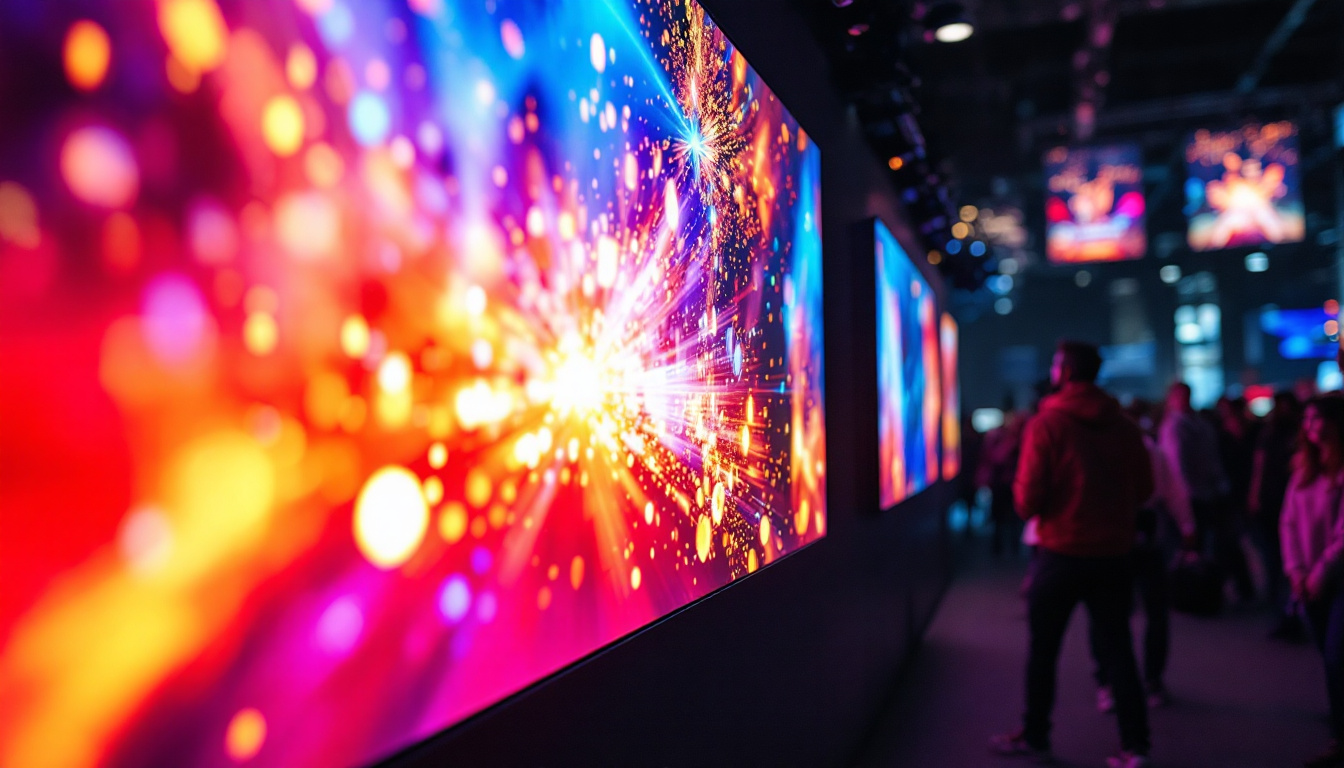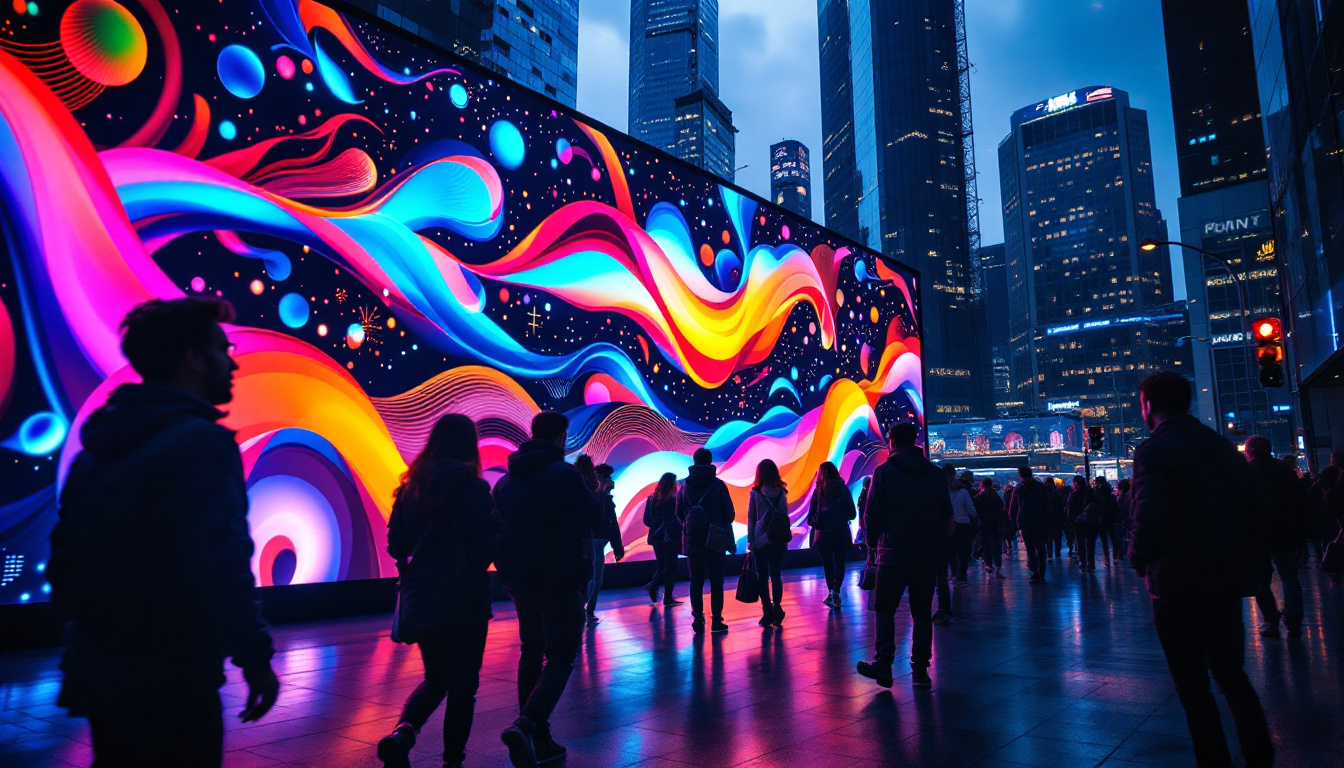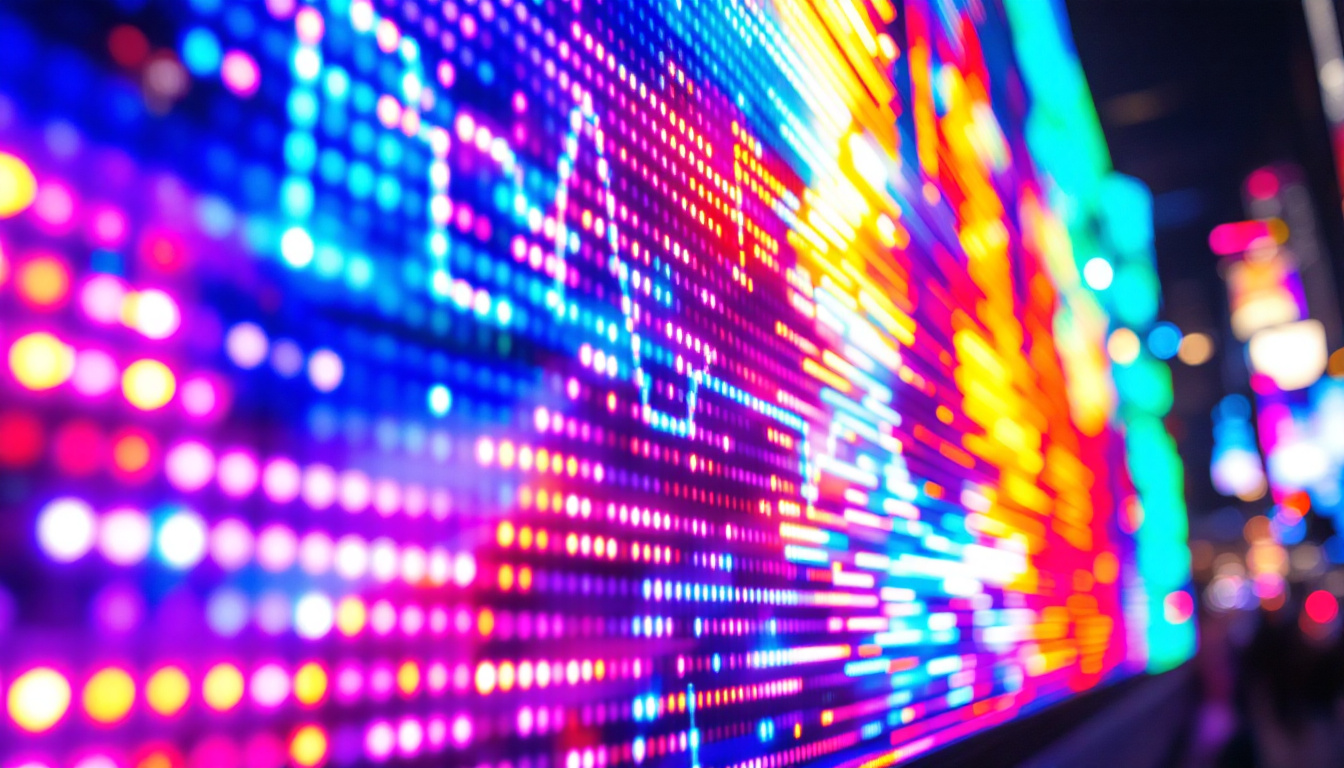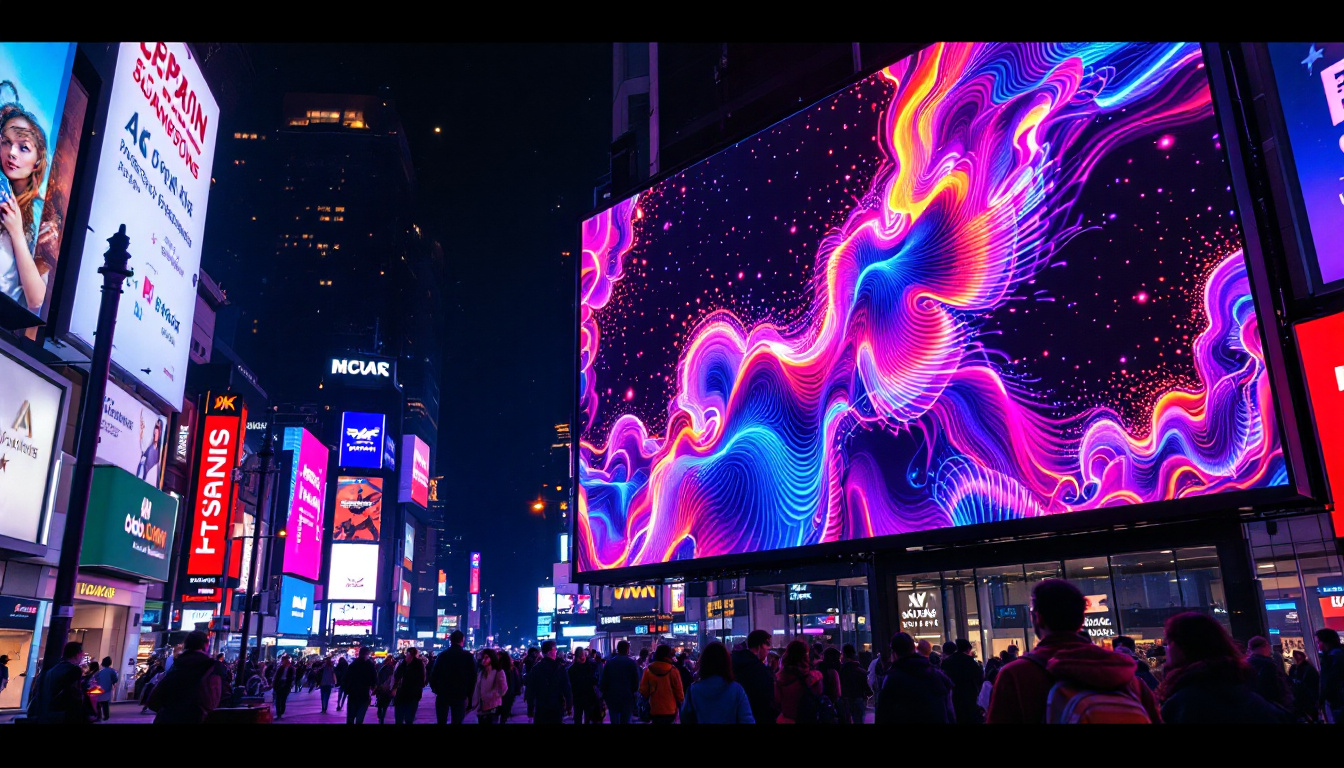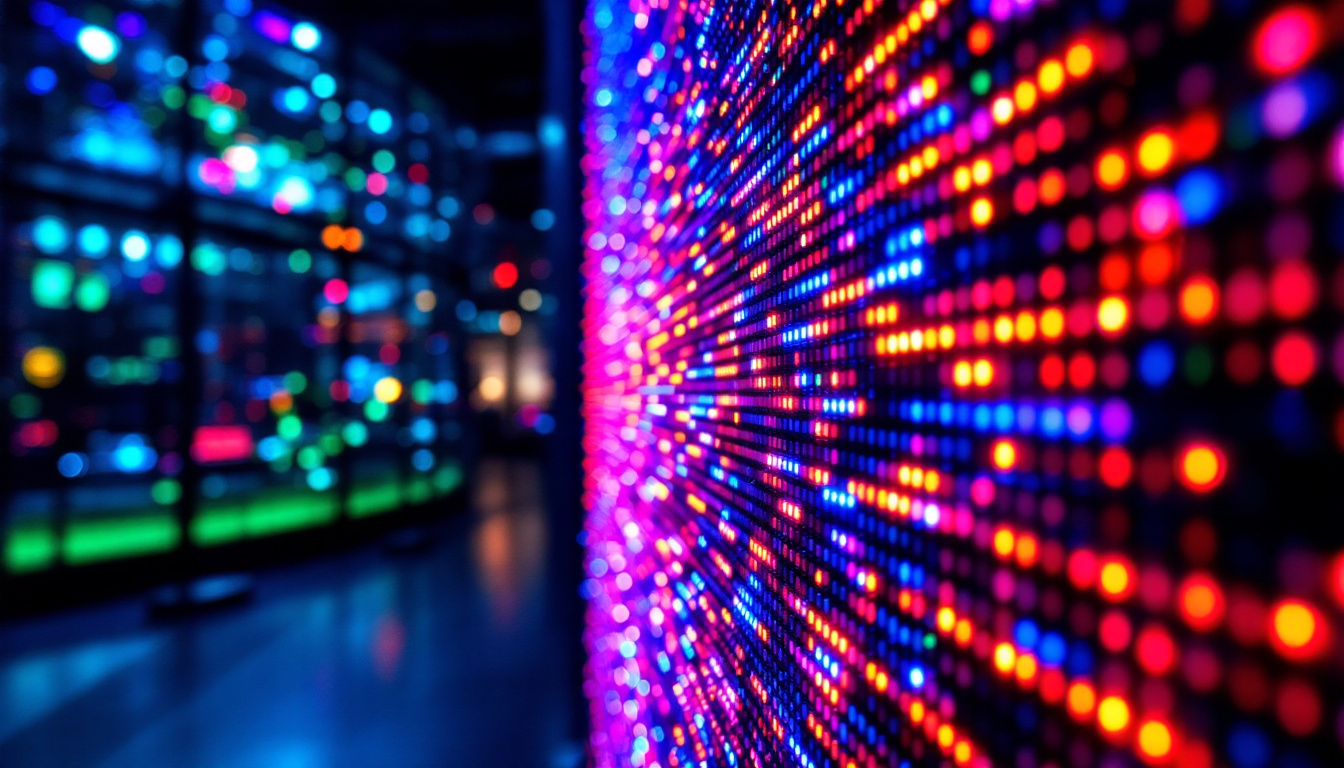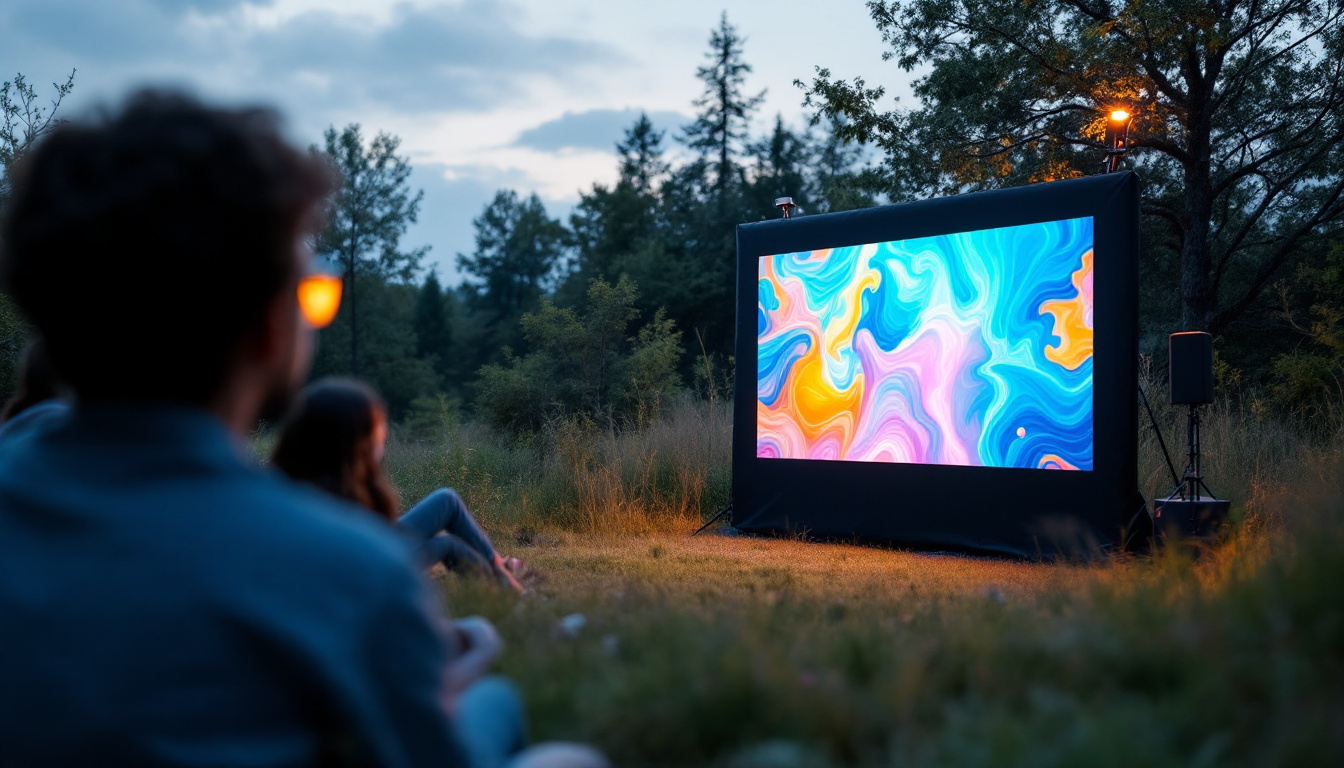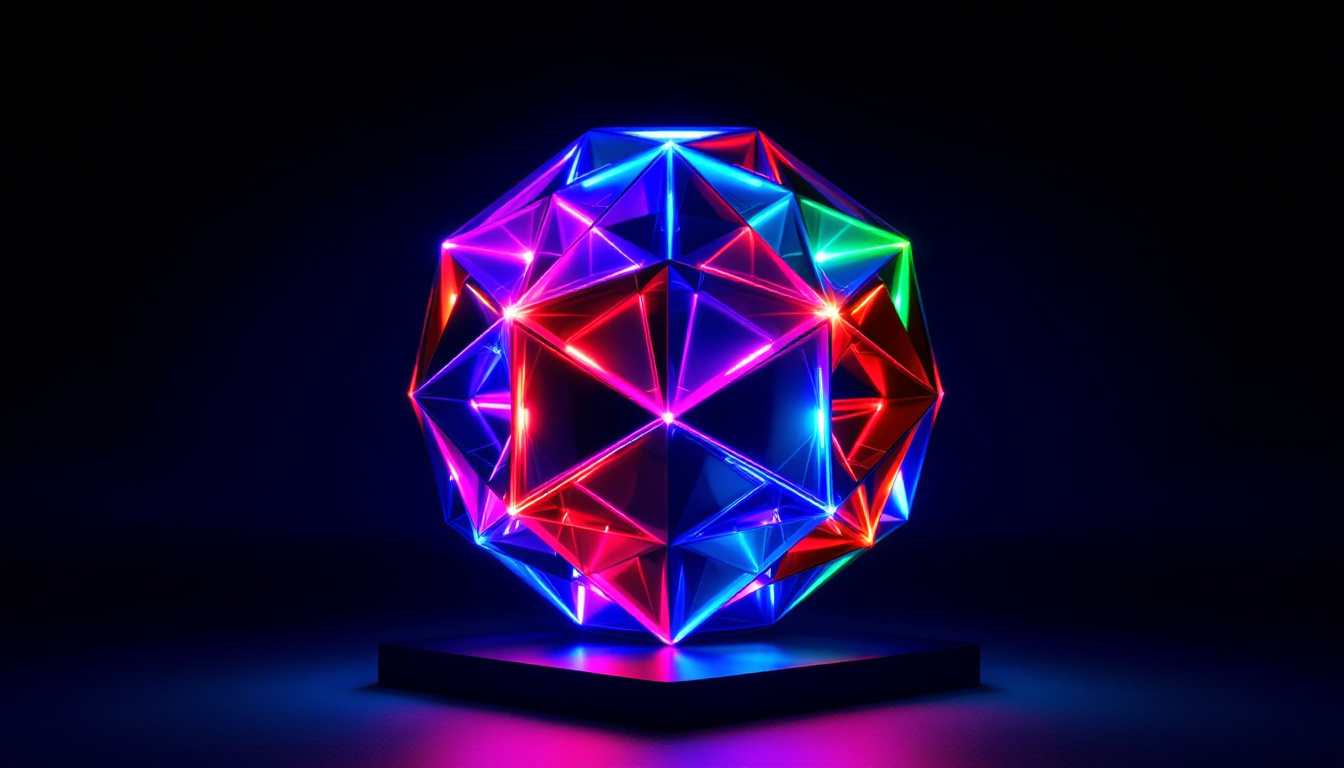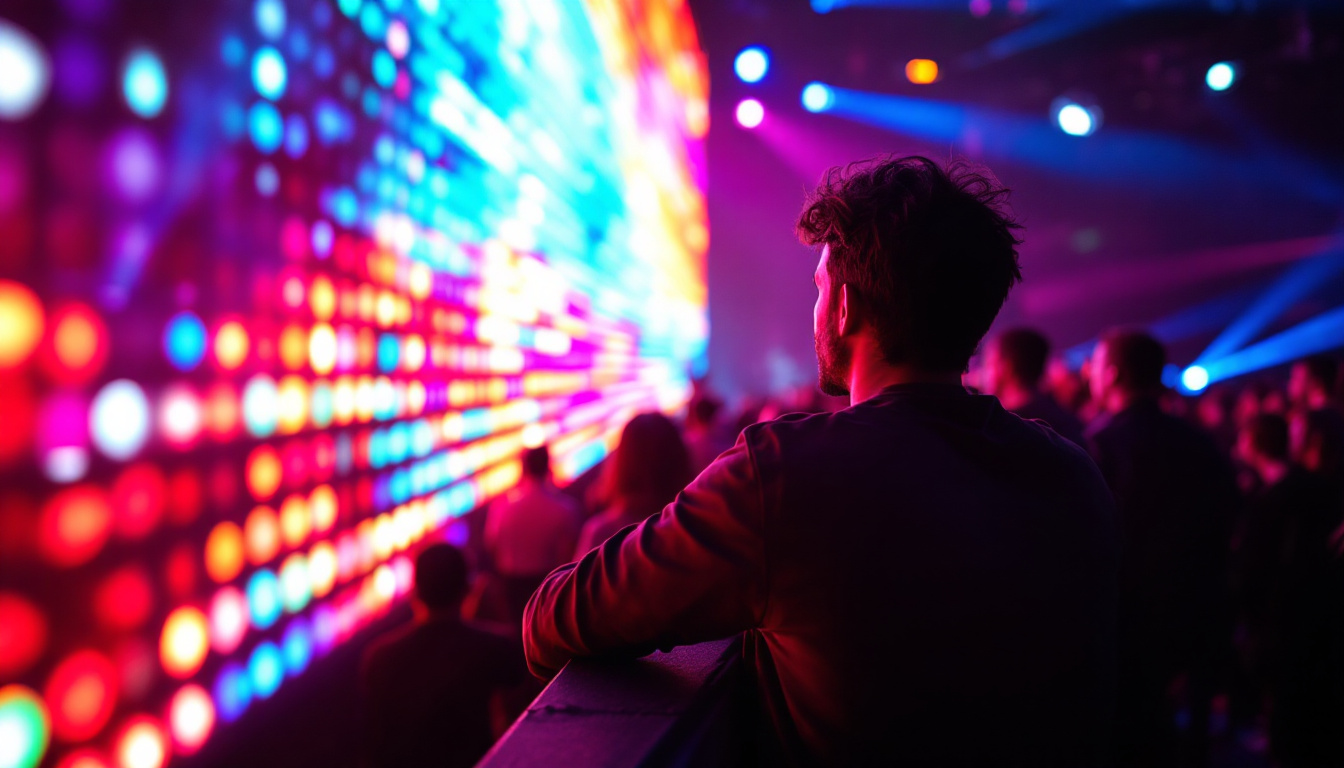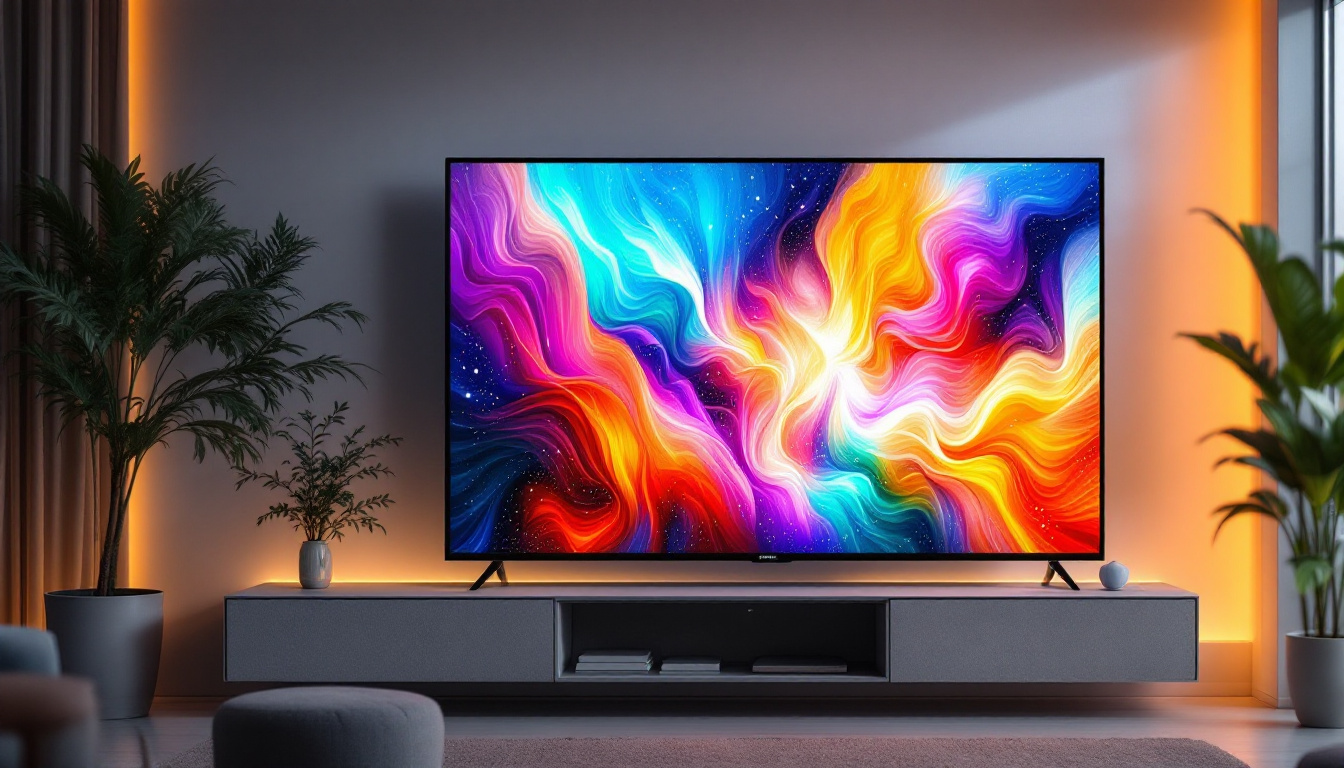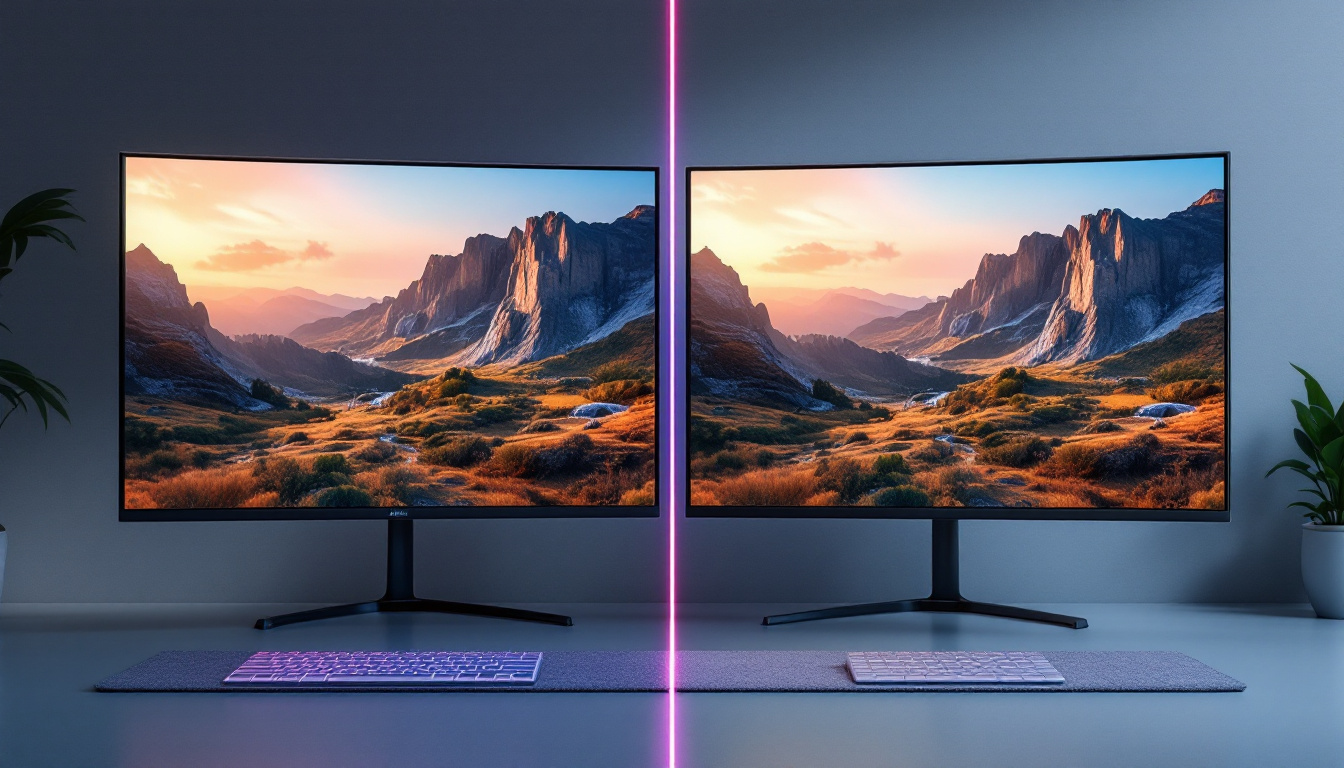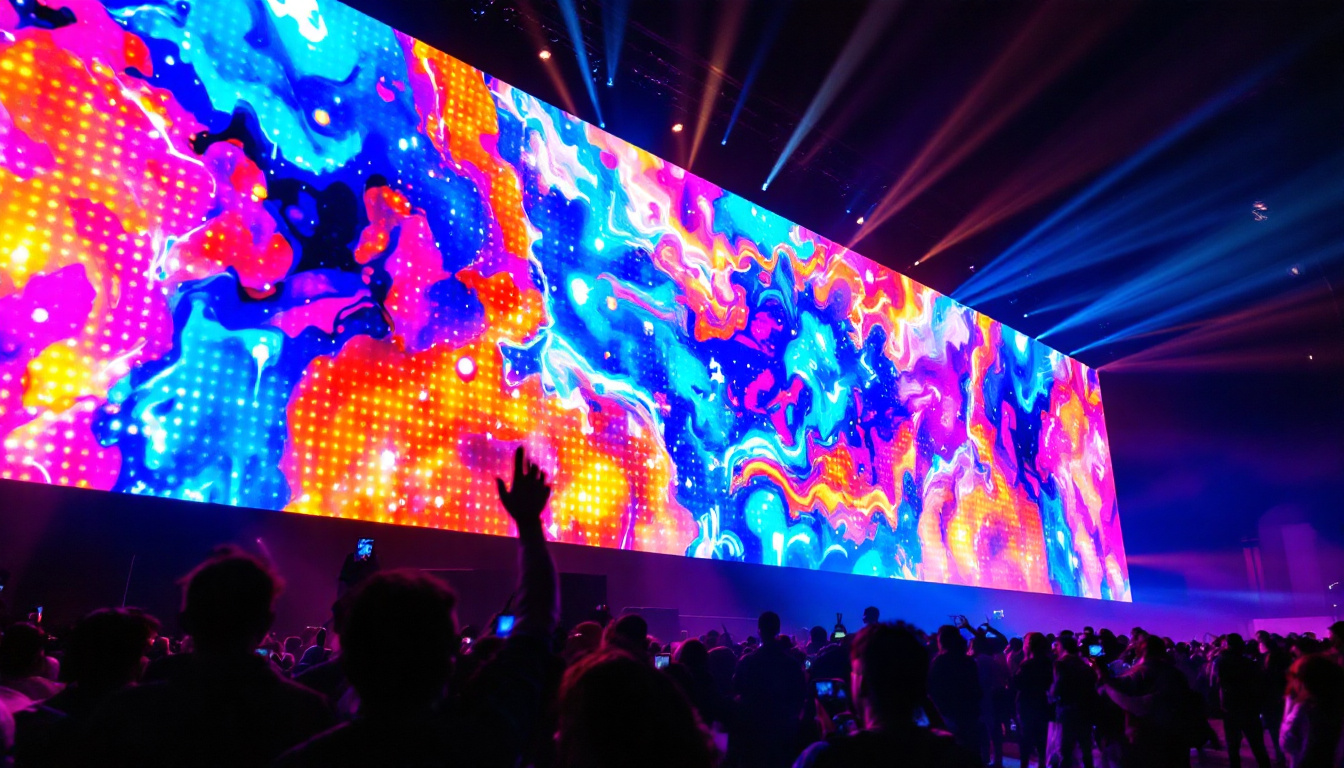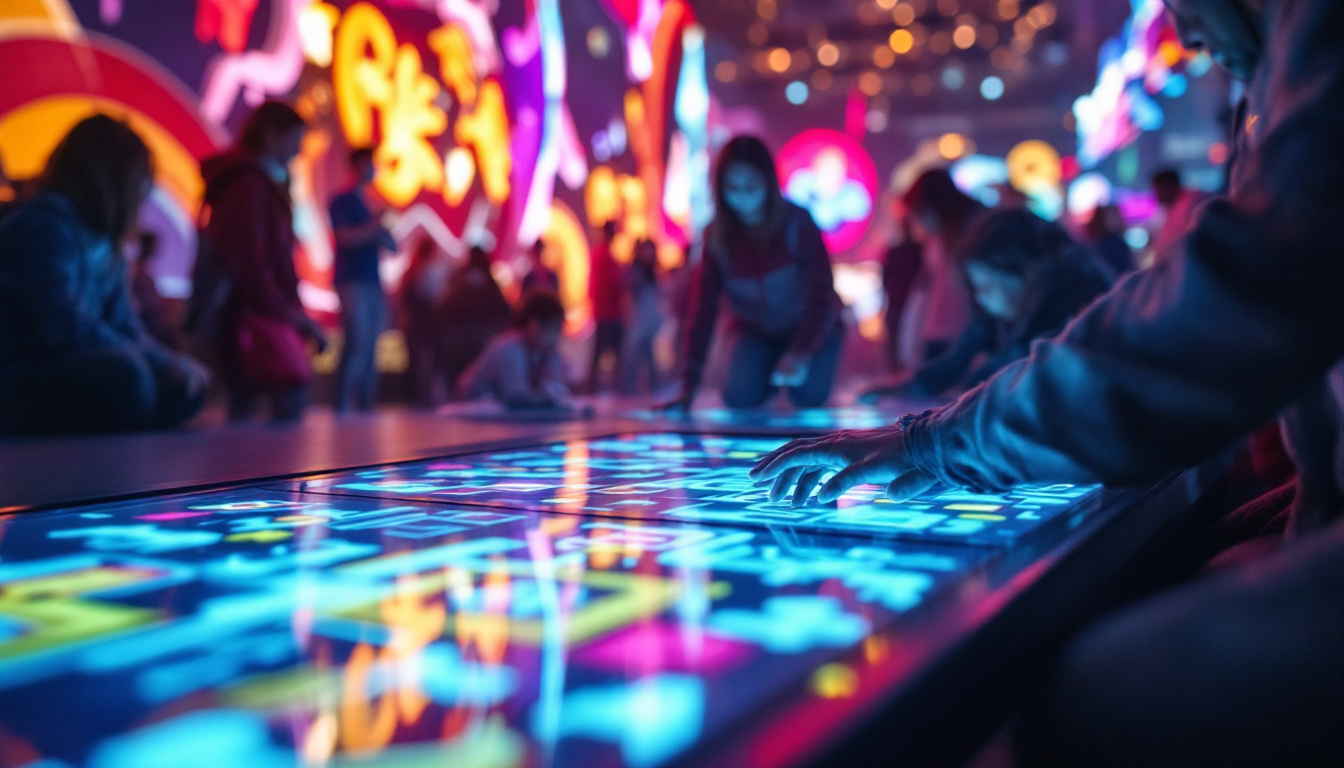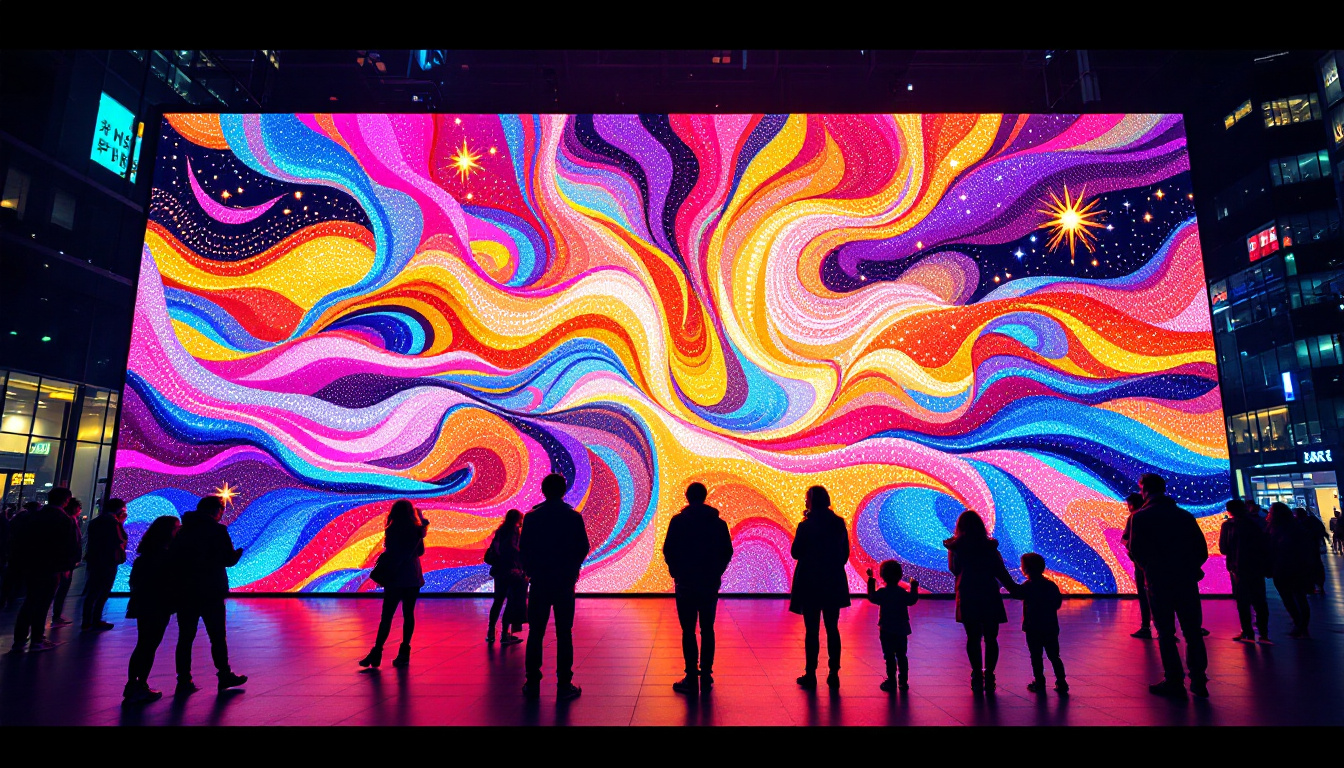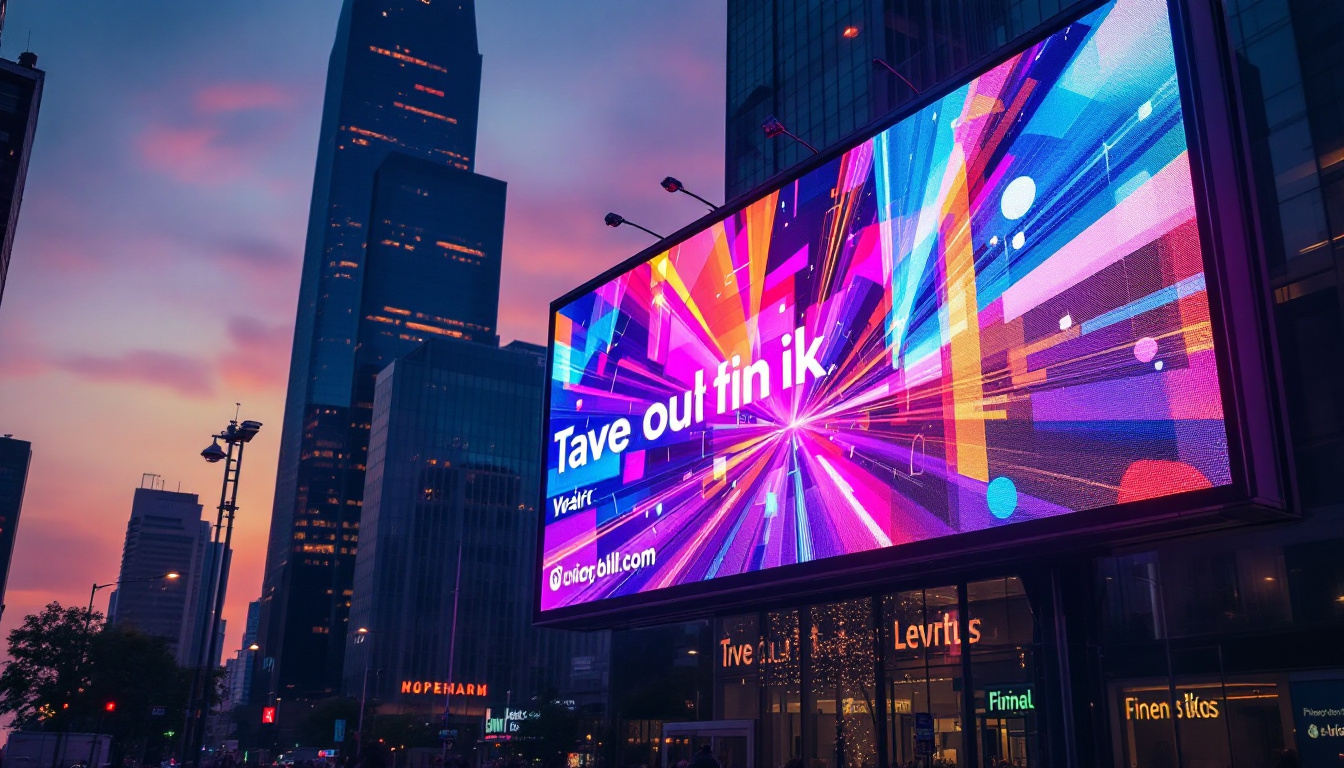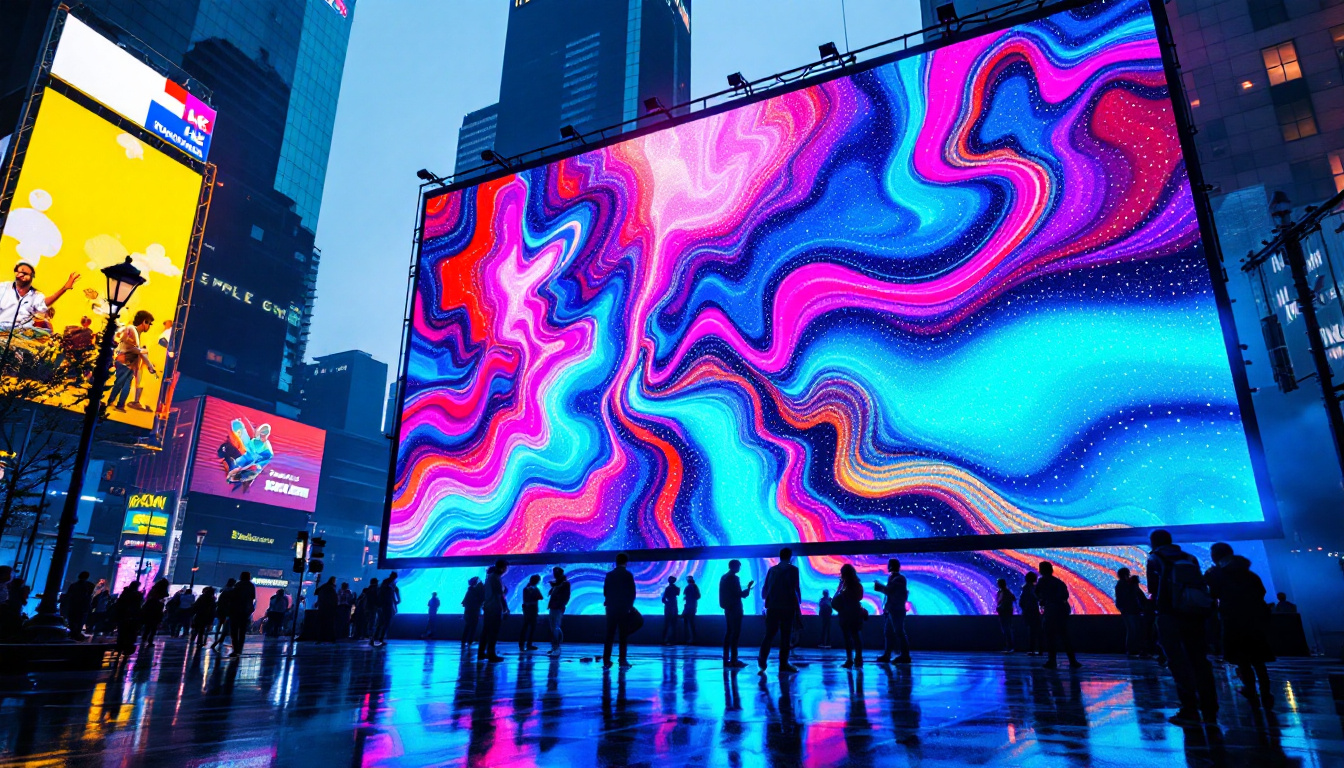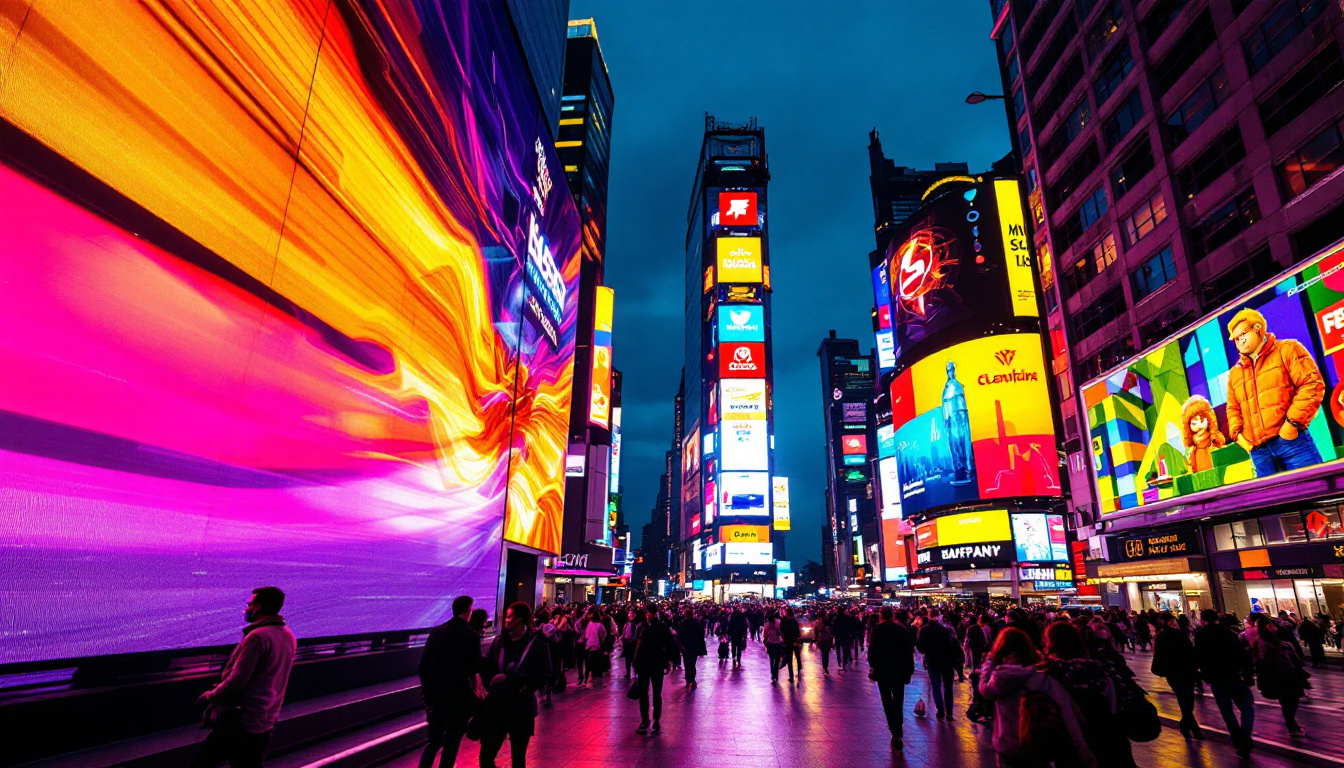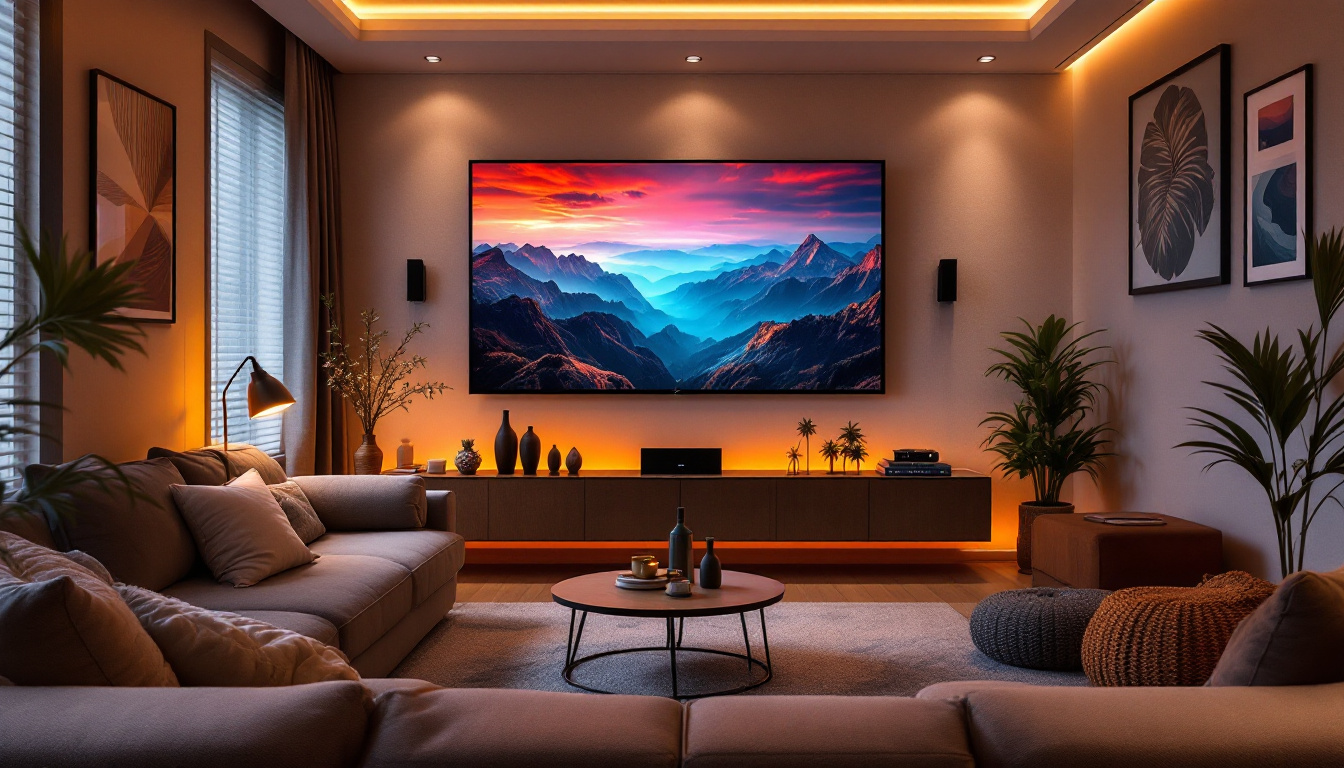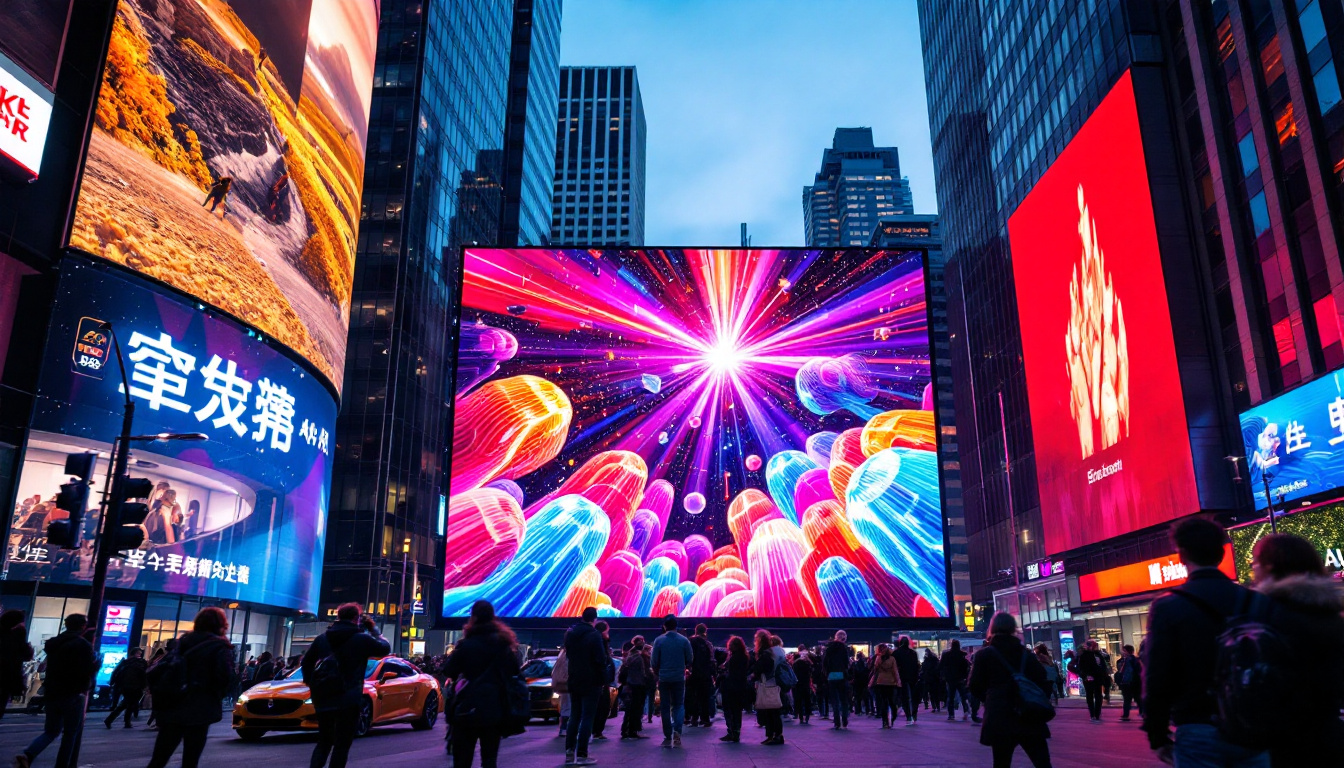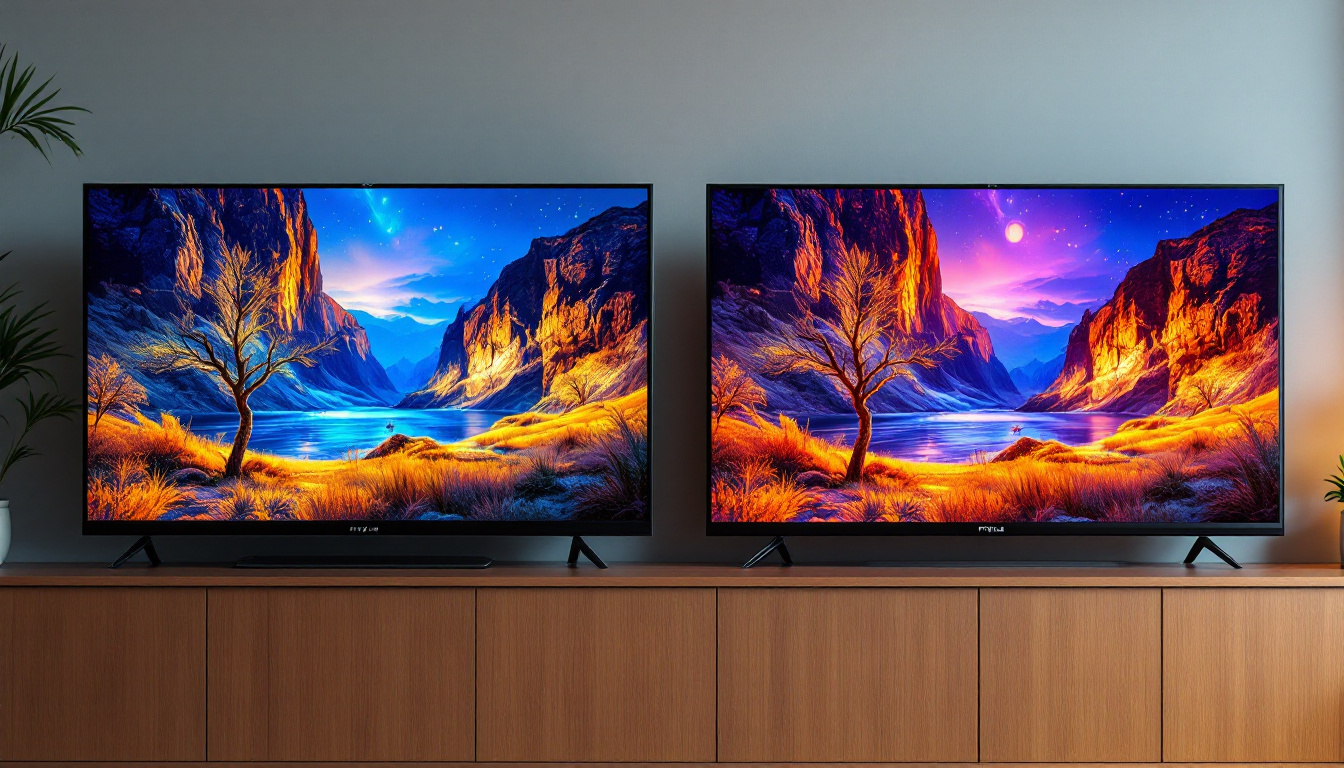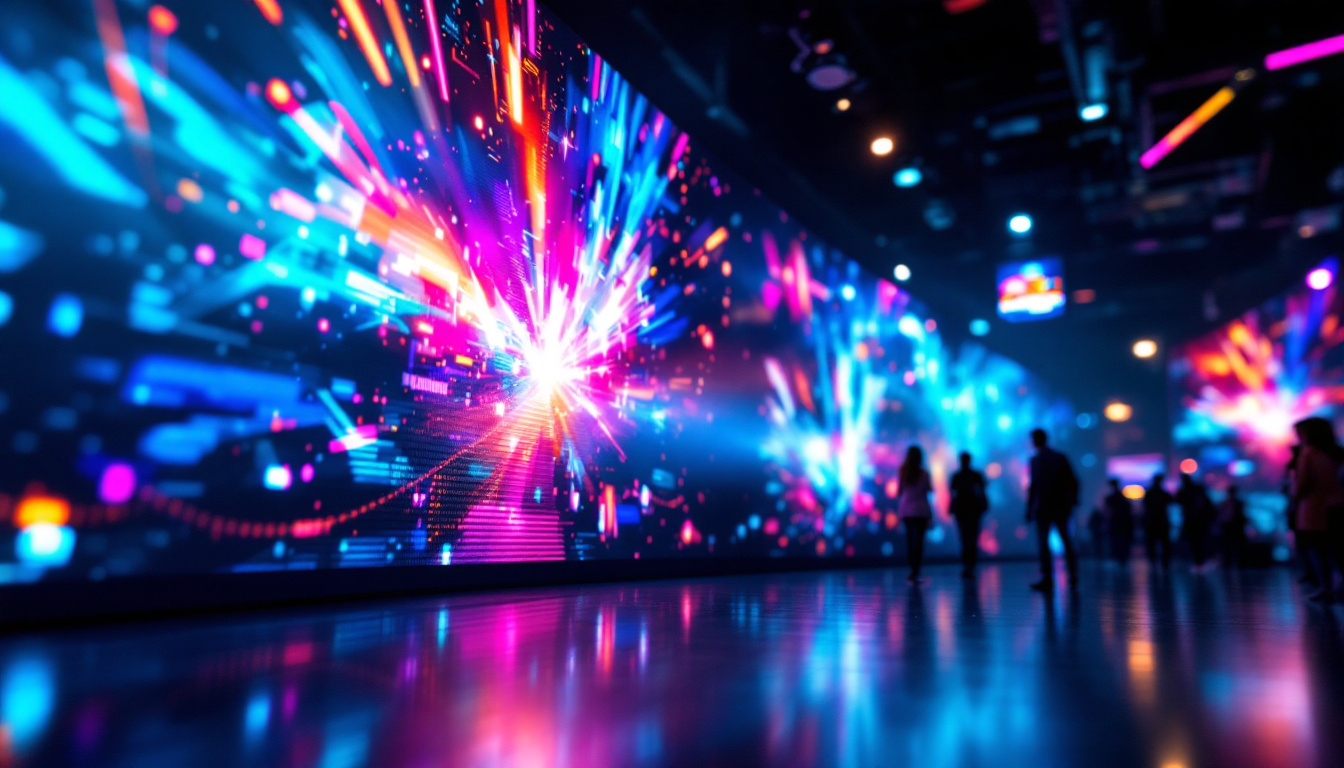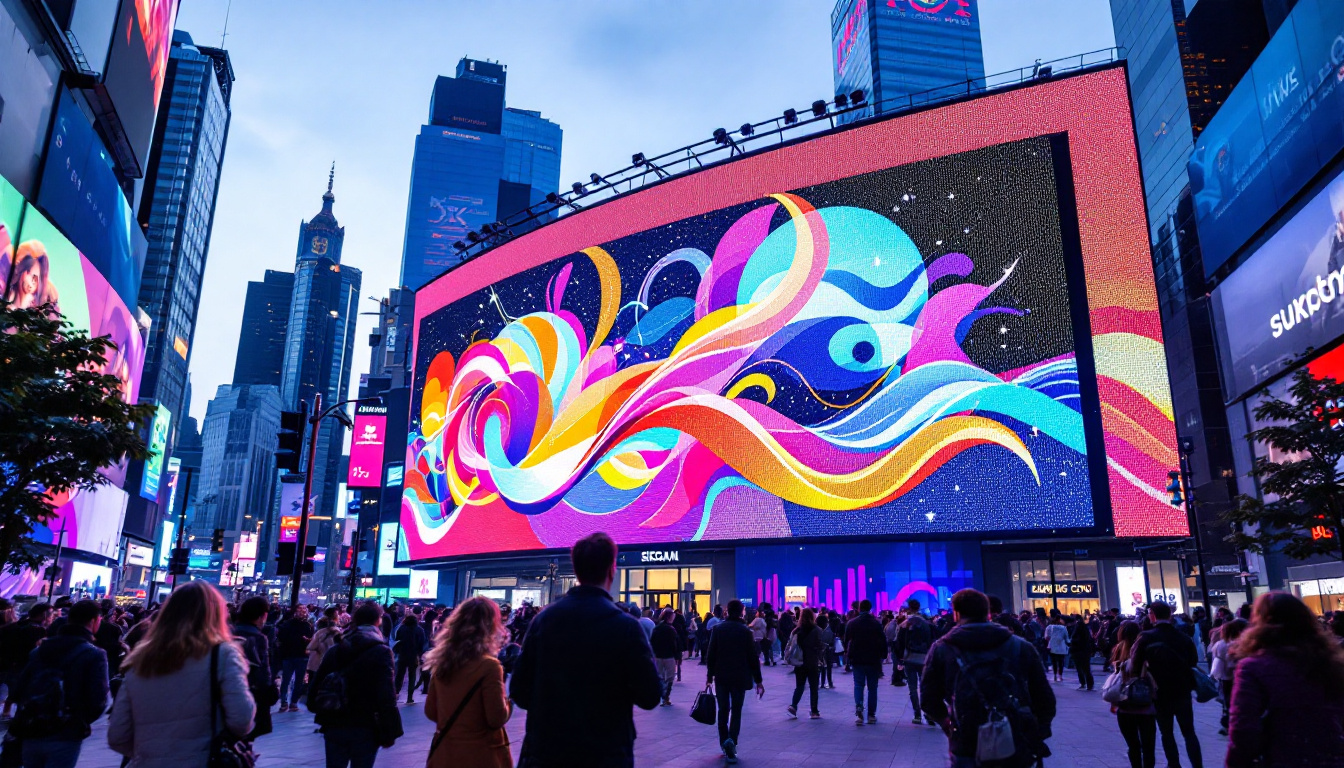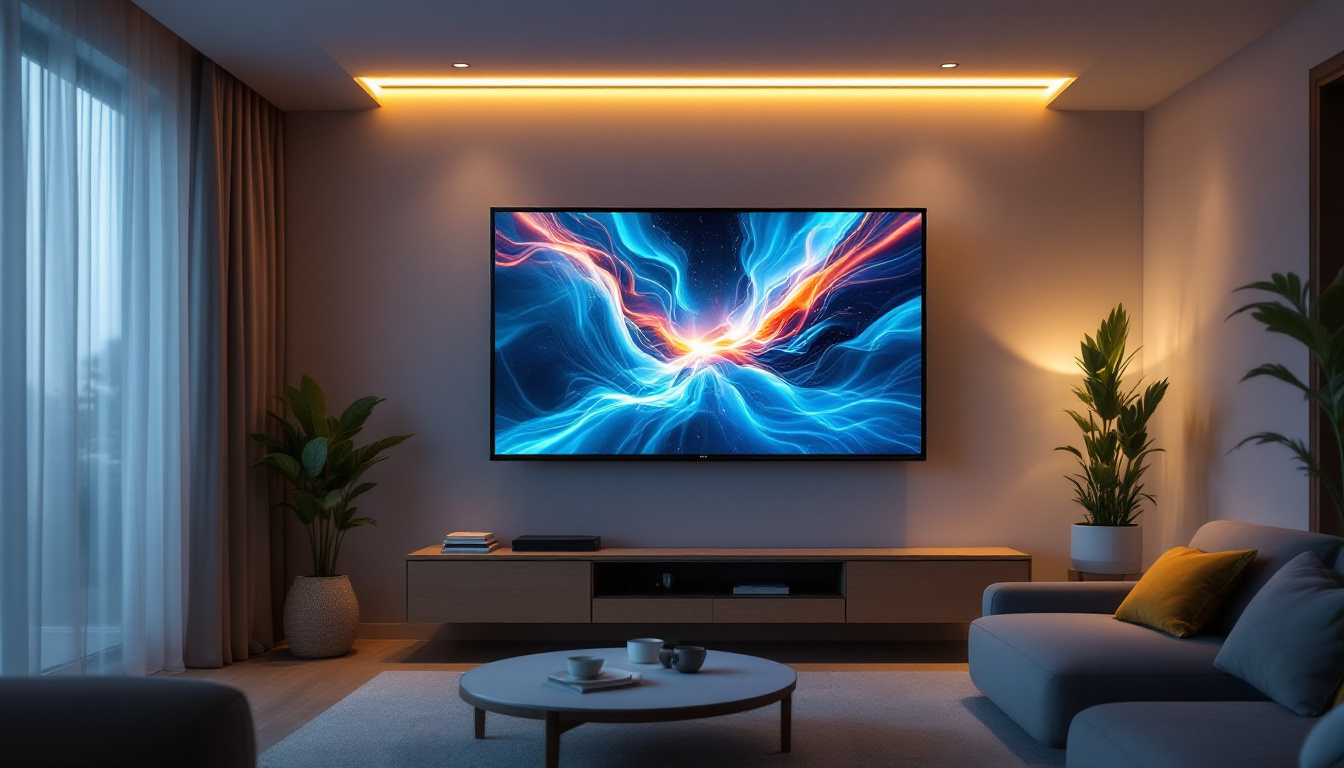In the modern world of visual technology, LED displays have become a cornerstone of communication, advertising, and entertainment. Their vibrant colors, high brightness, and energy efficiency have made them a preferred choice for a variety of applications. This article delves into the intricacies of LED video displays, exploring their components, technology, applications, and future trends.
Understanding LED Technology
Light Emitting Diodes (LEDs) are semiconductor devices that emit light when an electric current passes through them. This technology has evolved significantly since its inception, leading to the development of LED displays that are now ubiquitous in our daily lives. From streetlights to smartphone screens, the impact of LED technology is profound, transforming not only how we illuminate our environments but also how we consume visual media.
The Basics of LED Functionality
At its core, an LED is made of a chip that emits light when energized. The color of the light depends on the materials used in the semiconductor. For instance, gallium nitride produces blue light, while gallium phosphide yields green. By combining these colors, a full spectrum of hues can be created, which is essential for video displays. This ability to mix colors is crucial for applications ranging from decorative lighting to sophisticated digital signage, where vibrant visuals are key to capturing attention.
LEDs are categorized into two main types: individual LEDs and LED arrays. Individual LEDs are often used in smaller displays, while arrays are used for larger screens, allowing for greater flexibility and scalability in display size. The development of RGB (red, green, blue) LED arrays has further enhanced the versatility of LED technology, enabling the creation of dynamic displays that can change colors and patterns in real-time, adding an interactive element to advertising and entertainment.
Types of LED Displays
LED displays can be broadly classified into two categories: direct view and indirect view. Direct view displays consist of a matrix of LEDs that are visible directly to the viewer. Indirect view displays, on the other hand, use a backlight to illuminate a liquid crystal display (LCD) screen. Each type has its own set of advantages and applications. Direct view displays are particularly effective in environments where high brightness is necessary, such as outdoor venues, while indirect view displays excel in scenarios where detail and color fidelity are critical.
Direct view LED displays are commonly used in outdoor advertising and large venues due to their brightness and visibility in daylight. Indirect view displays are often found in televisions and computer monitors, where color accuracy and resolution are paramount. The choice between these two types often depends on the intended use; for instance, sports arenas favor direct view displays for their vibrant colors and high contrast, while home theaters lean towards indirect view displays for their ability to render subtle shades and details in cinematic experiences.
Advantages of LED Displays
LED displays offer numerous advantages over traditional display technologies. They are energy-efficient, consuming less power while providing brighter images. Their longevity is another significant benefit; LED displays can last up to 100,000 hours, reducing the need for frequent replacements. This durability not only translates to cost savings over time but also contributes to sustainability efforts by minimizing electronic waste.
Furthermore, LED technology allows for thinner and lighter displays, making installation and transportation easier. The flexibility in design also enables various shapes and sizes, catering to different aesthetic and functional needs. For example, flexible LED panels can be curved or shaped to fit unique architectural designs, opening up new possibilities for creative installations in public spaces, retail environments, and art exhibitions. As technology continues to advance, the integration of smart features into LED displays, such as connectivity and interactivity, is likely to further enhance their appeal and functionality in an increasingly digital world.
Components of LED Video Displays
Understanding the components of LED video displays is crucial for grasping how they function. Each display is made up of several key elements that work together to produce high-quality images.
LED Modules
LED modules are the building blocks of LED displays. Each module contains a matrix of LEDs arranged in a grid pattern. These modules can be combined to create larger screens, allowing for customization in size and resolution.
Modules are typically categorized by pixel pitch, which refers to the distance between the centers of two adjacent pixels. A smaller pixel pitch results in higher resolution and better image quality, making it ideal for close viewing distances. For instance, a pixel pitch of 2.5mm is often used in indoor environments where viewers are close to the screen, while a 10mm pitch may be more suitable for outdoor displays viewed from a distance. This flexibility in pixel pitch allows designers to tailor the display to the specific needs of a venue or event, enhancing the overall visual experience.
Control Systems
The control system is the brain of the LED display. It processes input signals and manages the output to the LED modules. This system ensures that the correct images and videos are displayed in real-time, allowing for dynamic content changes.
Advanced control systems can also integrate with various software solutions, enabling features such as scheduling, content management, and remote monitoring. This capability is particularly beneficial for advertising and event management. For example, advertisers can change their messages based on the time of day or audience demographics, maximizing engagement and effectiveness. Furthermore, modern control systems often support multiple input sources, allowing for seamless transitions between live feeds, pre-recorded content, and interactive elements, which can significantly enhance audience interaction and retention.
Power Supply
Power supplies are essential for providing the necessary voltage and current to the LED modules. A reliable power supply ensures consistent performance and prevents flickering or color distortion. Many modern LED displays incorporate redundant power supplies to enhance reliability, especially in critical applications.
In addition to redundancy, power supplies are designed with energy efficiency in mind, often featuring advanced technology that minimizes power consumption without compromising performance. This is particularly important in large-scale installations where energy costs can be substantial. Moreover, some power supply units come equipped with smart monitoring features that can alert operators to potential issues before they lead to failure, ensuring that displays remain operational and maintain their visual integrity over time. This proactive approach to power management not only extends the lifespan of the display but also contributes to a more sustainable operation overall.
Applications of LED Video Displays
LED video displays have found applications across numerous industries, revolutionizing how information is conveyed and experiences are enhanced. Their versatility makes them suitable for a wide range of environments.
Advertising and Marketing
One of the most prominent applications of LED displays is in advertising. Billboards, storefronts, and event venues utilize LED technology to capture attention with vibrant visuals. The ability to display dynamic content allows advertisers to engage audiences more effectively than static displays.
Moreover, LED displays can be programmed to change content based on time of day, audience demographics, or even weather conditions, making them a powerful tool for targeted marketing.
Entertainment and Events
In the entertainment industry, LED displays are used in concerts, theaters, and sporting events to create immersive experiences. Large screens provide audiences with enhanced visibility, ensuring that everyone can enjoy the show, regardless of their seating position.
Additionally, LED technology is often used in stage designs, allowing for creative lighting effects and backdrops that can be easily altered throughout a performance.
Transportation and Public Information
LED displays are increasingly used in transportation systems, such as airports, train stations, and bus terminals, to convey real-time information to travelers. Flight schedules, arrival and departure times, and safety announcements can be displayed clearly and efficiently.
public information displays in cities also utilize LED technology to communicate vital information, such as emergency alerts, traffic updates, and community announcements, enhancing public safety and awareness.
Future Trends in LED Display Technology
The LED display industry is continuously evolving, with new technologies and trends emerging that promise to enhance performance and expand applications. Understanding these trends can provide insight into the future of visual communication.
MicroLED Technology
MicroLED technology represents a significant advancement in LED displays. Unlike traditional LEDs, which are larger and require a backplane, MicroLEDs are tiny individual pixels that can be assembled into a display. This technology offers superior brightness, contrast, and energy efficiency.
MicroLED displays are also modular, allowing for seamless scaling to any size or shape. This flexibility opens up new possibilities for creative installations in both commercial and residential settings.
Flexible and Transparent Displays
Another exciting trend is the development of flexible and transparent LED displays. These innovative designs allow screens to be bent or shaped to fit unique environments, such as curved walls or furniture. Transparent displays can blend into their surroundings, providing information without obstructing views.
Such displays are particularly appealing for retail environments, where they can be integrated into windows or displays without compromising aesthetics.
Integration with Smart Technologies
The integration of LED displays with smart technologies is also on the rise. Smart displays can connect to the Internet of Things (IoT), enabling real-time data sharing and interactive experiences. This capability allows for more personalized content delivery and enhanced user engagement.
As smart cities and smart buildings become more prevalent, the demand for intelligent LED displays that can adapt to their environment and user needs will likely increase.
Conclusion
LED video displays have transformed the landscape of visual communication, offering vibrant, energy-efficient, and versatile solutions for a variety of applications. As technology continues to advance, the potential for LED displays is boundless, paving the way for innovative designs and enhanced user experiences.
Understanding the components, applications, and future trends of LED displays is essential for anyone looking to leverage this technology effectively. Whether for advertising, entertainment, or public information, LED displays are poised to play a crucial role in shaping how we interact with the world around us.
As industries continue to adopt and innovate with LED technology, it is clear that the future of visual displays is bright—illuminated by the power of LEDs.
Discover the Future of Visual Displays with LumenMatrix
Ready to elevate your visual communication with cutting-edge LED technology? LumenMatrix is at the forefront of innovation, offering a wide array of LED display solutions tailored to meet your needs. From captivating Indoor LED Walls to dynamic Outdoor LED Displays, and from versatile Vehicle LED Displays to sleek LED Poster Displays, our products are designed to make your brand shine. Experience the revolution in digital signage with our LED Sports Displays, interactive Floor LED Displays, and the seamless integration of Custom and All-in-One LED Display solutions. Embrace transparency with our LED Transparent Displays and see how LumenMatrix is transforming the way messages are conveyed with clarity and impact. Check out LumenMatrix LED Display Solutions today and join the visual revolution!

